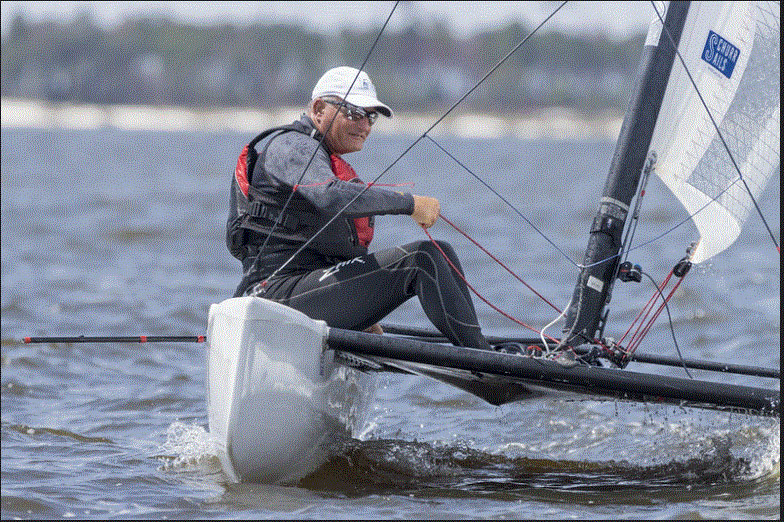Copyright TheBeachcats.com
Please Support
TheBeachcats.com
1. Square the Boat
To sail the boat fast, we must first determine if the boat is square. The trampoline can be left on the boat and slightly de-tensioned for these measurements.
- Starting at the bow, place your tape measure at the center of the forward screw and measure to the same point on the other bow. Write this number down.
- At the transom, measure from the middle of the bottom pin across to the same spot on the other transom. Write this number down. The goal is to have these two numbers the same. If you are slightly toed in (bow number slightly less than the transom) then you should be okay. If the difference is over ¼” (5mm), then shim the front beam stops until you obtain the same number as the transom. You may have to shim the rear crossbar in some instances.
Here are two examples of what you are trying to achieve.
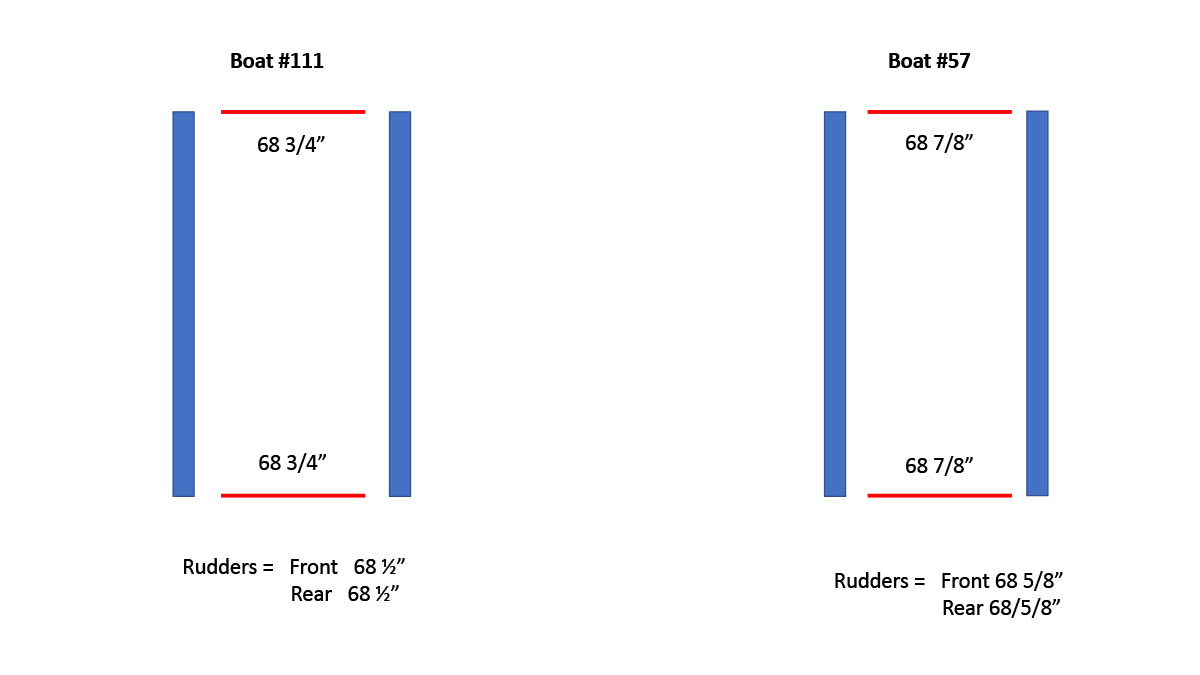
- With the rudder system locked down in the sailing position and hung on the boat, measure down 12” from the bottom of the lower castings and make a mark. With your tape measure, measure across the rudders and write down the number. On the trailing edges of the rudders in approximately the same spot as the leading rudder edges, again measure across the rudders and write down the number. Just like squaring up the boat, the number should be the same. There is no rudder toe performance gain on a 13’ boat, especially since the beams are straight. Any toe in or out is simply adding drag.
3. Rig Tension
This is an area that each sailor must determine for themselves on how the boat feels to them. Some flat-water sailors like loose rigs and some lumpy-water sailors prefer a tighter rig. It’s all personal preference and there is no wrong answer!
- Shroud lengths over the years have varied. Earlier boats had longer shrouds (13’ 11”) and newer boats have shorter shrouds (13’ 8”). What we have noticed is the shorter shrouds allow more adjustability in the rig tension than the longer shrouds. Simply put, you can apply more rig tension. Here are two examples of the shorter shrouds and how to go from boat to boat to determine what rig settings are used.
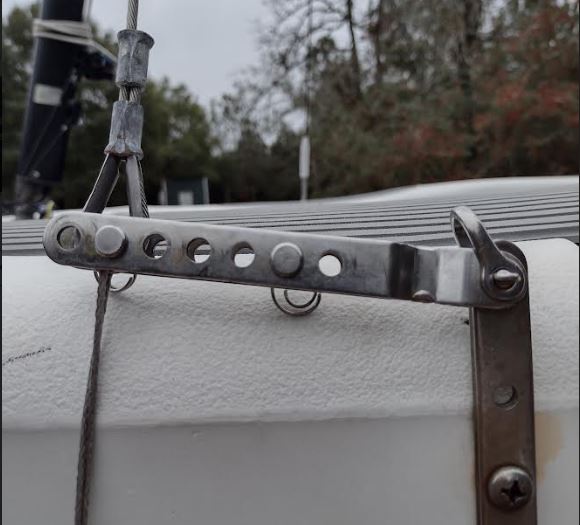
In this picture, the shorter shroud (thimble) is in its optimal loose rig position. The other pin is located at the optimal position for the longer shrouds. Again, these are not ‘set in stone’ settings but simply a guide for your starting point. Instead of twisting your hand on the wire, this is a better way to view the tension. This method makes it really easy to check other rigs when walking through the boat park and your curiosity is peaking!
4. Mast Rake
We now have a good understanding on what prerequisites are needed to get the boat on her feet and tracking in the water. Mast Rake is the largest performance enhancement on the Wave. This, like rig tension, will vary with how the sailor likes to sail the boat. Some sailors like the rig stood up more vertical for power and some simply like it as far back as it can go before going block to block. It can be a fine line between pointing and footing for speed. As I write this, my body weight is 160lbs. If you are heavier, it is suggested to stand your rig forward a hole or two on the forestay. Again, this is a ”how does it feel” to each individual and tuning will vary accordingly.
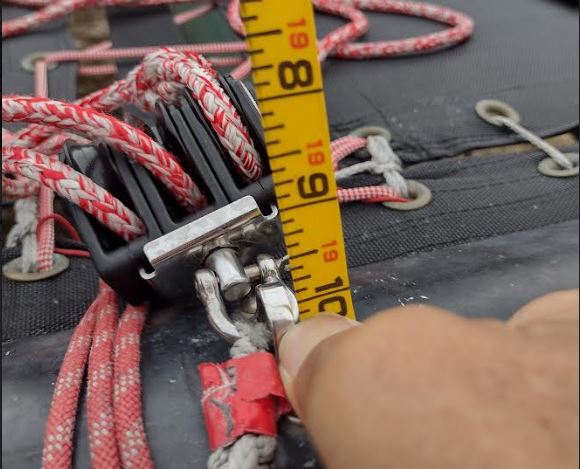
By running a tape all the way up the mast and securing it on the mast horn cleat, measure to the top of the eyestrap on the rear beam. A great starting point is 19’ 10” and is a wonderful all-around rake for my body weight in both light and heavy wind conditions. Lighter folks may end up with a number closer to 19’ 8” (more rake) and heavier sailors might get closer to 20’ (less rake). This will all be dictated to the sailor on how the boat “feels” to them. Come up with your solution!
5. Mainsheet Blocks
Since 4:1 is the maximum purchase we can use, there are all kinds of iterations on the theme. Some folks like big blocks, some stick with what the boat came with out of the box, and some simply go off the charts in search of the lowest and lightest setup. And this applies to mainsheet thickness too! I always like to go with the lowest and lightest setup that will retain its integrity under hours of load. My preference on the Wave is pictured below. It is a Harken 40mm ratchet (on all the time) and a 40mm double on the top. I like this because I can literally sheet block to block when needed. Mainsheet size varies with wind strength. I like to use 7mm when it’s windy, and use either a 6mm, or in really light air, a 5mm line with a 29mm double block on top. The line pictured is 7mm.
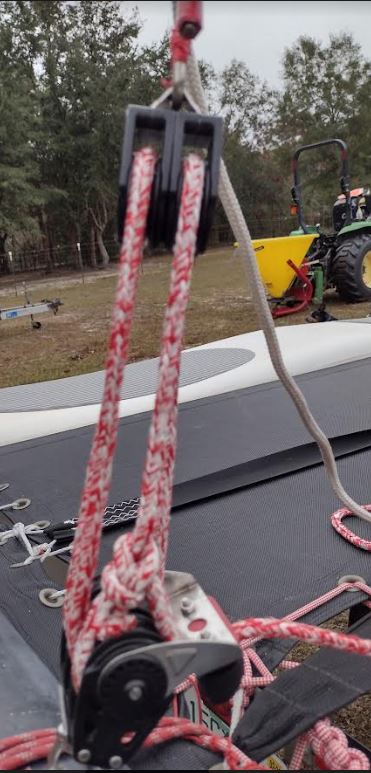
6. Sail Shape
The shape of the sail (draft placement and depth) is the final performance element we can adjust on the Wave. Opinions will always vary on this! What I would like to offer the community is what I have found works on the Wave. This is derived from decades of sailing singlehanded boats. Again, this is simply my opinion!!
The two pictures below are of the HCA Wave factory sail and a mylar Formula Wave sail. The draft placements are very similar (approx. 38%) with the camber depth being a little more in the Formula sail. Both have their moments on the race course with different materials and outline shapes.
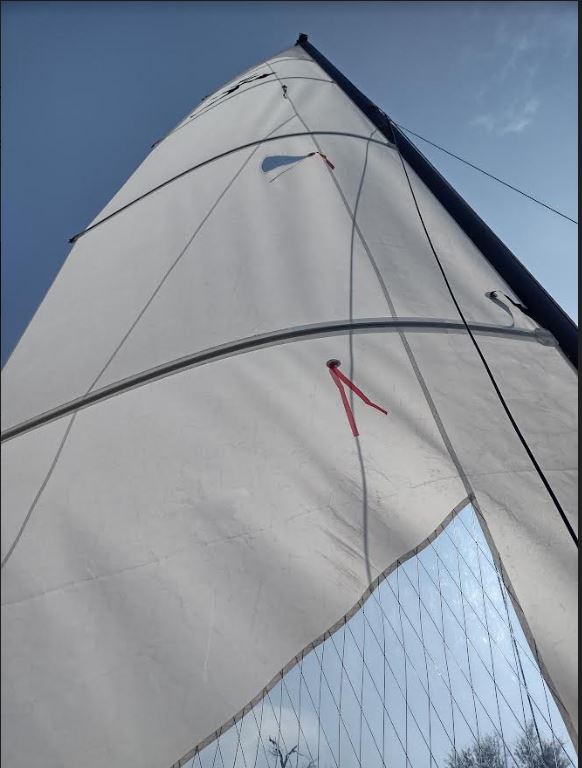
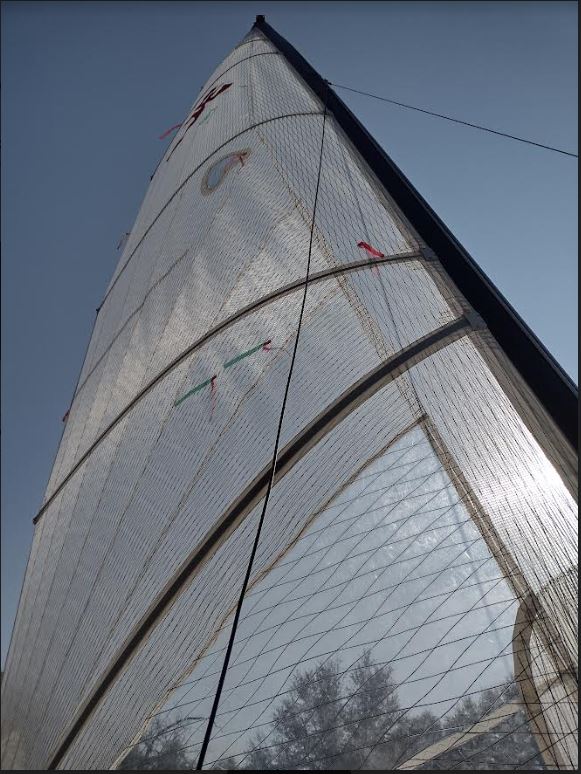
The HCA sail on the left went through a batten tapering process using a belt sander to achieve the desired profile. The Formula sail on the right is using RBS tapered battens supplied by the sailmaker. They are very similar when there is wind blowing across them and these static pictures don’t do them justice.
7. Conclusion
The Hobie Wave is a fun little boat to sail! No matter your skill level, there is always something about this little catamaran that in some way will make you a better sailor. As you progress on your Wave journey, please share your findings with the community. It’s how we all get better and that’s the goal. I hope all of you find this guide useful and enlightening!!!
See y’all on the race course,
Bob Curry
The “Master Unirig Sailor”
